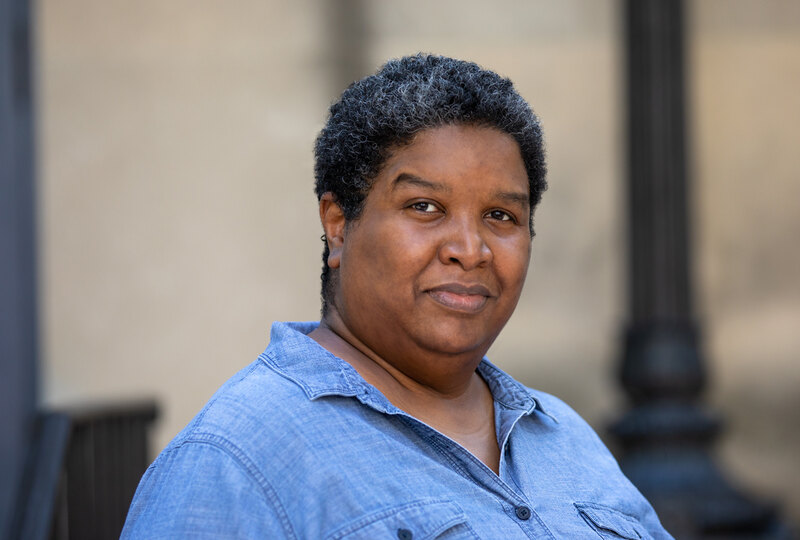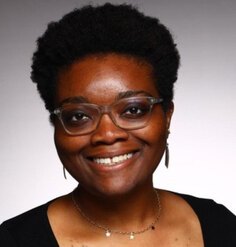Perspectives: Valerie Aymer

JUNE 28, 2021
Valerie Aymer, PLA, ASLA, has practiced landscape architecture for over 18 years working with EDAW, EDSA, and as the AECOM Design Lead for Construction Administration on the World Trade Center projects in lower Manhattan. In 2015, she joined the faculty of the Department of Landscape Architecture at Cornell University, her alma mater, where she teaches several technical courses including site engineering. In May 2020, the second edition of her book Landscape Grading - A Study Guide for the LARE was published by Routledge Press.
What drew you to landscape architecture?
Landscape architecture was my second career. I did not discover the field until about 8 years after I finished my undergraduate degree. I had been working in the pharmaceutical industry at Merck & Co., Inc. in Rahway, New Jersey in one of their administrative offices. At the time, I was working on our department’s first internal website and as an associate editor for an in-house publication. I was looking for something more creative that could combine art and science. I decided to play hooky one day and drove to Longwood Gardens in Kennett Square, Pennsylvania. As I wandered the gardens, I asked an intern what careers combined art and science, specifically plants, and she said, “Have you thought of landscape architecture? There is a book available in the gift shop.” The book she referenced, Careers for Plant Lovers & Other Green Thumb Types (1995) by Blythe Camenson, had one paragraph about landscape architecture, drawing plants and designing spaces, and I was hooked.
I spent the next year working on a portfolio and reading more about the kinds of work being done in the profession and I visited a local office to see what kind of work landscape architects do. I saw a set of blueprints and I knew I had found the career I wanted to pursue — I could work on projects to better the environment; I could work creatively; I could create places to make people’s lives better, and it was a recognized profession. At the time, I did not know how small the profession is in the US, or that I would be one of few Black landscape architects in the profession.
What is driving you professionally right now?
As a professor there are four things that drive me professionally. First, the rigor of the academic program is key. Landscape architecture is a profession that has certain technical skillsets and, while the students need not be experts, they should be familiar with all aspects of the required skills prior to graduation. The burden for teaching students the fundamentals of the profession lies in academia, not in the professional setting in which they may end up working. There has been a push to more conceptual work and the danger lies in forgetting that concepts need to be buildable; how the design touches the ground plane is critical.
Second, if the design is key, then understanding and incorporating the environmental and human systems that surround the design will lead to stronger outcomes. Landscape architecture is not static. How does the design improve over time? A sense of place is formed not at installation, but over time, and if it is embraced by the community. Every design once built has a positive and negative impact; how can we strengthen one and lessen the other?
Third, drawing is the basis of design. As landscape architects we speak to each other with images not text; sketching is the most important tool that a landscape architect has, the ability to express one’s ideas graphically and being comfortable doing so.
Lastly, Indigenous, Black, and immigrant history of landscape is US history of landscape and must be central to the core of any study of American landscape architecture, not viewed as an elective. We cannot change or do better if we do not know and own the profession’s place in what has come before.
What challenges is landscape architecture allowing you to address right now?
My focus has changed so much in the last 19 years. When I first entered the profession, I was focused on learning all that I could that would make me a well-rounded landscape architect. I was and still am concerned with how systems work; it is a carryover from my undergraduate training in biology. When I first started teaching, I challenged my students to embrace the technical discipline of landscape architecture to make them stronger designers. In short, to not give away their power to others in the allied professions. Now, as I reflect on my past work experiences, both professional and teaching, I challenge myself to train my future colleagues to be more than just technically strong. Community engagement is the piece that was not as relevant when I went to school, but it is the key to a well-loved, thoughtfully designed place and its value is clear.
My most recent thesis student did an ethnographic study on an underserved community in Baltimore and my colleague, Josh Cerra, devotes his research to working on climate change in communities along the Hudson River Valley. Both are examples of taking two enormous challenges facing the US (social inequity and climate change) and wrestling with how to bring them down in scope to engage the community and the individual. Going forward, my goal is to use landscape architecture to aid in this effort, making landscape interventions understandable and tangible for the people who are or will be most affected by these challenges to create places that will be embraced by the communities they serve.
What challenge would you give emerging leaders?
Currently, we view emerging leaders in our profession as those whose work wins the attention and praise of our professional organizations and fellow designers. It will be imperative that our emerging leaders seek to lead in more than just innovative design. As a profession, we need to engage in more activism, and we need landscape architects to run for public office. We need to create the space for our profession to grow beyond the bounds of site-specific design, urban design, and planning. Our country is going to experience a massive change to how people live because of climate change, and currently I am unaware of any government organization that has a real understanding of how climate change will affect shifting populations and how those population shifts will impact established communities, underdeveloped land, and limited water resources.
Our government organizations focus on the aftereffects of disaster. Right now, we have professionals and academics studying these issues, and many firms and studios have signed up to tackle these challenges in LAF and partners' Green New Deal Superstudio. I would love to see the profession have a place in the federal government — a permanent seat at the table with scientists, planners, and engineers to guide discussions on how to manage positive and negative impacts of climate change so we can keep people out of harm’s way. To get there, we need to provide proof that we deserve a place at the table. Our work must be backed up with data.
Where do you think the profession needs to go from here?
We must stop thinking that we need to have all the answers about a landscape problem and actively seek out, promote, and compensate collaboration with other professions that serve people and the environment. We must focus on the challenges of landscape instead of chasing an unattainable architectural ideal. Our most inventive work comes when we collaborate with community activists, sociologists, anthropologists, biologists, geologists, and other environmental scientists. Aiding them in their research creates a feedback loop that improves our design concepts and creates analyzable data that can be re-created. Whether our work is residential or regional scale we are trained to work in teams. This is a strength that we should embrace.
Lastly (this is wishful thinking) I would like the profession to consider a name change to environmental architecture. As a profession, we started out designing cemeteries and estates. We have far exceeded those bounds. Today we design small sites, larger regional landscapes, urban spaces, green corridors, and everything in between. We address the needs of wealthy clients, but we also address the public good. We look at safety, climate, economics, demographics, topography, materiality, maintenance, etc., in addition to natural systems, yet we continue to use a dated name for and notion of what we do and who we are — a name which confuses the layperson, minimizes our scope among the allied professions, and leaves us undervalued by our clients. If we embrace the environment in all its aspects, natural and man-made, our name should reflect that.
LAF's Perspectives interview series showcases landscape architects from diverse backgrounds discussing how they came to the profession and where they see it heading. Any opinions expressed in this interview belong solely to the author. Their inclusion in this article does not reflect endorsement by LAF.











